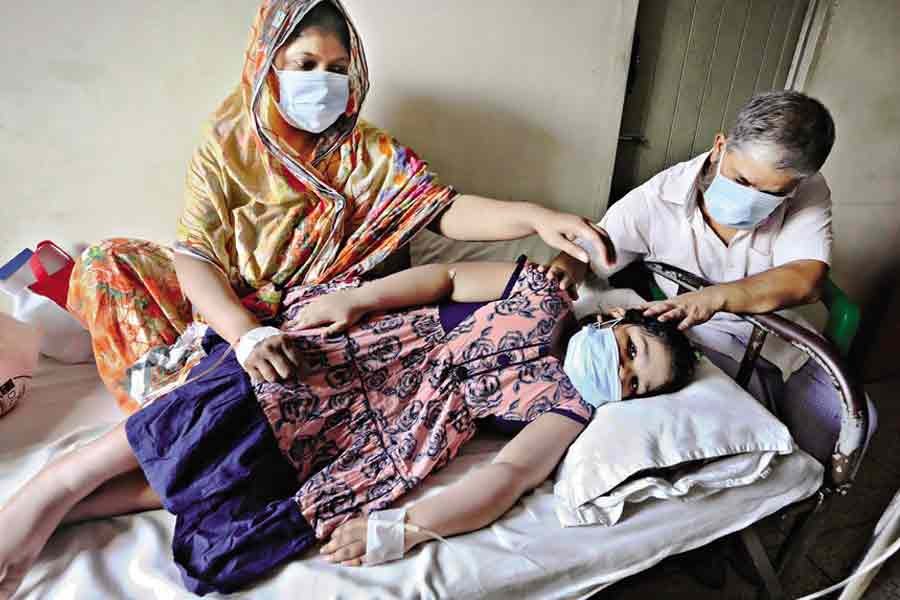As a dengue outbreak intensifies across Bangladesh, Dhaka is most vulnerable to the risk of viral infection, and the city's Goran and Basabo areas have the highest prevalence of the disease-carrying Aedes aegypti mosquito, a government study has found.
The disease control wing at the Directorate General of Health Services (DGHS) conducted the survey under a scheme to eradicate malaria and Aedes mosquito-borne diseases from July 29 to Aug 7, reports bdnews24.com.
The survey took into account the Breteau Index (BI), which counts the number of positive containers per 100 houses inspected.
And, the BI level in Basabo and Goran areas under Dhaka South City Corporation's ward No. 2 is 73.3, according to the findings released on Sunday.
For context, a BI score of more than 20 means the presence of mosquito larvae is risky for the inhabitants.
The survey was conducted in 100 places across 98 wards -- 41 in Dhaka North and 59 in Dhaka South.
The BI level exceeded 40 in 19 areas across 10 wards of Dhaka. The BI was 20 or higher in 67 areas under the jurisdiction of the two city corporations.
As many as 3,000 houses and installations in these areas were inspected in the course of the study. The Aedes mosquito larvae were found in 588 spots or 19.6 per cent of the surveyed households.
According to the health directorate, the presence of mosquitoes is higher in 2021 than last year. This year, as many as 30 areas of Dhaka North and 26 areas of Dhaka South posted a BI score of over 20.
By comparison, only nine areas under the DNCC and 17 areas under the DSCC exceeded a BI score of 20.
The high concentration of mosquitoes poses a big risk to public health, according to Prof Kabirul Bashar of Jahangirnagar University's Department of Entomology.
"The survey found a BI score of 20 or more in 56 areas. This indicates the Aedes mosquito-borne disease will be more prevalent here. A lot of dengue patients have been found in these places.”
Prof Kabirul believes citizens must share the blame with the city authorities for the increase in the dengue-carrying Aedes mosquitoes.
“It is the responsibility of residents to keep their households clean and tidy. The threat of the Aedes mosquito will come under control if one's yard is kept clean.”
291 HOSPITALISED IN A DAY
The hospitals in Bangladesh admitted 291 patients suffering from dengue fever in the 24 hours to 8 am on Sunday, taking the number of hospitalisations with the mosquito-borne disease so far this year to 8,041.
As many as 6,787 patients have returned home after recovery while 36 others have died, including 24 in August.
The number of patients who were still in hospitals was 1,218 on Sunday morning. They included 1,131 in the 41 hospitals in Dhaka.
The dengue virus carried by Aedes aegypti mosquitos put more than 100,000 people in hospitals in 2019.
The threat of dengue declined last year when only 1,405 people were down with the disease as per hospital records.
The rising number of dengue fever cases is complicating the handling of the coronavirus pandemic by overstretched hospitals.


